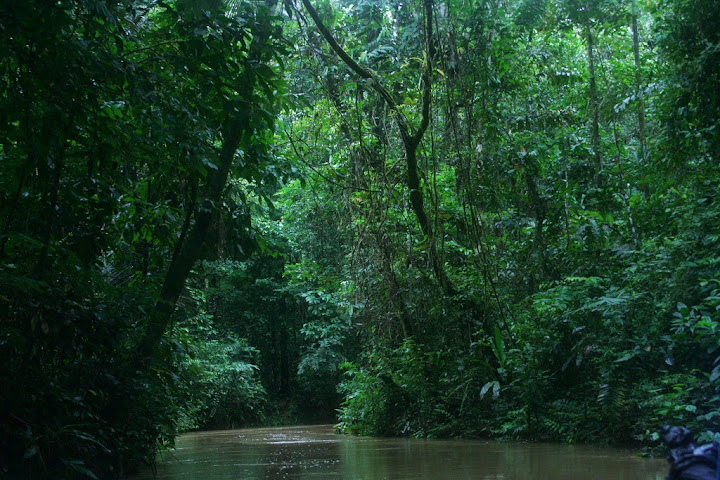Bags are packed, equipment checked, guidebooks read and re-read. We are ready! We already know more than the average Joe about the Amazon. If we were preparing for a test, we’d expect an A+. But as the plane slips below the clouds, and we catch our first glimpse of the rainforest…a vast carpet of green with only the snaking curves of the Amazon River to give a sense of scale, we begin to realize we don’t really understand this place. This is the place that overwhelmed Charles Darwin, who once described it as “one great, wild, untidy, luxuriant hothouse.” The PBS documentary movies describe it as crawling, slithering, clinging, and jumping with amazing wildlife – much of it unknown to science. This is the place we’ve been told is critical to the health of our planet…a place that is rapidly disappearing unless we take action…but we don’t have the first clue how to even begin…

View of Amazon by K. Cinterino
As our next batch of summer travelers prepare to depart for the Amazon, they are fortunate to experience one of the world’s most astonishing and important ecosystems – the tropical rainforest. In preparation for this epic adventure, together we have done our homework and can reel off the facts. We know that the world’s rainforests:
• support more than ½ of the world’s biodiversity;
• provide new medicines, foods, and other products of global economic value;
• impact local, regional, and global climates-protecting against floods, drought, and erosion;
• store vast amounts of carbon and help to mitigate global climate change;
• provide food and shelter to indigenous people;
• and are a source of inspiration and wonder.
We know as the world’s largest intact rainforest, the Amazon is a critically important global resource. We’ve read that it is unrivalled in its scale and its complexity. We might even know that it makes up of 50% of the world’s remaining rainforest and encompasses an area greater than the continental USA.

If we are really serious about our studies, we also know that the Amazon harbors least 10% of the word’s known biodiversity, with new species being discovered at the rate of 1 every 3 days (more than 1,200 new species in the last decade). We know that the Amazon River system accounts for more than 15% of the world’s fresh water and its forests store more than 90 billion metric tons of carbon. We can even state with some confidence that approximately 350 ethnic groups are sheltered by its forests and sustained by its waters – and that a few “uncontacted” groups still exist.

Squirrel Monkey. Photo by N. Hantman
GREAT! We can recite all these facts and more. Surely we deserve an A+ and can pat ourselves on the back for a job well done. But wait…what job is well done? Has our fact finding led to something greater? Has it made a difference? Have we forged any kind of connection to this place that will move us beyond factual recall and into the realm of inspiration, wonder, and action?
In Bringing the Biosphere Home: Learning to Perceive Global Environmental Change, Mitchell Thomashow, a place-based education guru, suggests that to be actively engaged in understanding a place you must acquire
“…a range of facilities – the willingness to plunge your senses into the living landscape, the ability to ask good, scientific questions and develop approaches to finding empirical answers; the imaginative capacity to use the natural world as inspiration for artwork, photography, stories, essays, music, and poetry; the open-mindedness and reflective ability to be perennially engaged by the wonder, insight, and meaning derived of from your observations.”
These are the ingredients which will open the doors to understanding a place – even a place like the Amazon.

We are looking forward to “plunging into the living landscape” of the Amazon this summer, armed with the facts, but ready to ask good questions, ignite our imaginations, and engage with wonder. We are ready to get that A+ in Amazon 101!
JOIN THE CONVERSATION! Leave a reply below. Have you been to the Amazon? Are you going? What questions do you have? What do you want to know more about? How do you make meaning in new and different places and situations?
Christa Dillabaugh is our Education and the Rainforest Editor. A former middle school and high school science educator, she coordinates experiential field programs for educators and students in the rainforests of Central and South America. She currently serves as education director for Amazon Rainforest Workshops and loves traipsing through rainforest mud in search of teachable moments! You can read her Amazon field notes at http://amazonworkshops.wordpress.com/
Photo Credits: ©Christa Dillabaugh, Amazon Rainforest Workshops, unless otherwise noted
